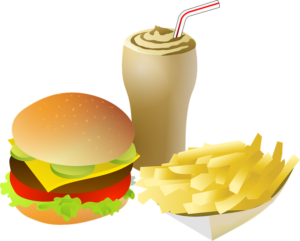Typical American Diet Increases Chronic Pain and Inflammation While Increasing Fat and Reducing Muscle
It’s a foreign concept for many. You probably haven’t heard of this or given it much thought.
The truth is neither has your doctor in all likelihood. It’s just not something that is generally taught in medical education. It’s also tough for most doctors to keep up to date just with the area of their particular specialty.
This is because there is simply too much information in so many different areas to keep up with regularly regarding illness, disease, health, and wellness.
No one health practitioner can be an expert in everything… having said that diet is exceptionally important for several reasons.
- Your diet does have a massive impact on not just your weight and your overall health, but even in the amount of pain and inflammation in your body.
- Diet is something that is 100% under your control.
- It’s something that you can change and improve to reduce your pain and systemic inflammation which has the probability of reducing your pain (of course) and improving your health because so many disease processes are linked to chronic inflammation.
- Diet is a primary determinant of your body weight.
- Excess weight is also linked with so many serious health conditions, as well as, putting additional stresses on your body increasing your chances of experiencing pain/chronic pain.
This particular diet study looked primarily at chemicals in the body related to inflammation as a result of 13 weeks eating the average American diet (in mice).
The summary findings indicate that this (poor) Standard American Diet:
- After 13 weeks on the diet, a significant increase in fat mass and a significant decrease in lean mass was found.
- Poor diet heightens hypersensitivity (of the pain system), which is more likely to increase the symptoms in chronic pain conditions.
- The study highlights the negative effects of poor diet quality with respect to recovery from hypersensitivity (increased chance of the pain system being more active) and susceptibility to chronic pain (ongoing pain that goes on beyond 3 months).
The researchers go on to state: “Poor diet seems to have exacerbated the normal recovery period from this mild inflammatory insult,” said researcher Sorge. “Because poor diet heightens hypersensitivity, patients with chronic pain who regularly practice bad diet habits are likely to experience exaggerated pain responses and recovery from injury or surgery.”
What this means in plain English is that:
- Eating the standard American diet over time makes it more difficult for you to heal properly without pain, even from mild injuries… let alone more severe injuries like those that might be seen in a car accident.
- The diet increases your body’s release of little chemicals that cause inflammation and increase the sensitivity of the pain system making it more likely you will experience ongoing pain.
Sleep problems and Musculoskeletal problems have also been associated with pain and inflammation… which in turn is associated with so many different health problems.
The real solution to health care is the right lifestyle choices + chiropractic to improve the way that your body functions.
Yes there are other issues for so many people… even so chiropractic + positive lifestyle can help restore normal function and generally improve so many parts of your life.
Many people find that adopting the right diet can eliminate most of the problematic foods for them resulting in feeling much better and being able to start to work on other important lifestyle changes to turn their health around regardless of where they are currently on the health -> illness continuum.
If you live in Texarkana area and are suffering with chronic pain or any neuro-musculoskeletal health problem, then contact us @ Hagebusch Chiropractic.
We’re here to help.
Stacie K. Totsch, Megan E. Waite, Ashleigh Tomkovich, Tammie L. Quinn, Barbara A. Gower, Robert E. Sorge. Total Western Diet (TWD) alters mechanical and thermal sensitivity and prolongs hypersensitivity following Complete Freund’s Adjuvant in mice. The Journal of Pain, 2015; DOI: http://www.jpain.org/article/S1526-5900(15)00912-8/fulltext
 Protected by Patchstack
Protected by Patchstack
Leave a Reply